Etosha National Park is a safari lover’s paradise. In part because of the abundance of wildlife and easy viewing, particularly towards the end of the dry season, but also because of the simplicity and fun of exploring the park in your own vehicle. It’s without a doubt one of our all-time favourite travel experiences. Below we present our Etosha National Park Self-Drive Safari Roadtrip Travel Guide to help you get the best out of your stay in this one-of-a-kind National Park.
Disclosure: This page (Etosha National Park Self-Drive Safari RoadtripTravel Guide) may contain affiliate links to products. At no additional cost to you, we may receive a commission for purchases made through these links. We only recommend products or services we personally believe in. More details can be found on our disclosure and policies page.
One of the reasons Etosha is so great for wildlife viewing is because of the barren landscape that forms during the dry season, which leads to masses of animals congregating around the numerous waterholes around the park (over 40 of them), creating some of the most spectacular wildlife viewing opportunities in the world. It is home to over 100 species of mammals and over 300 species of birds, and it has a salt pan that can be seen from space! Which mammals do you ask? How about elephants, zebras, springboks, lions, rhinos, wildebeest, gemsbok (oryx), eland, impala, kudu, warthog, jackal…and these are just some of the species we saw during our 4-day stay in Etosha!
When to visit Etosha National Park
The first thing to know about Etosha is that are essentially two seasons: the dry season, which runs from June to October, and the wet season, which runs from November to May. Each season creates very distinct viewing experiences.
Although the wet season creates beautiful and lush vegetation throughout the park, the visible wildlife is much more scarce as they spread out over the plains and behind the bushy shrubs. The roads also tend to be much muddier and less navigable.
The dry season, particularly toward the end of it, creates the optimal environment for wildlife viewing as the animals tend to congregate around the over 40 waterholes scattered throughout the park.
Our suggested time of year to visit: September/October.
How to get to Etosha National Park
The following routes and times assume you will arrive through Etosha’s south gate (Anderson Gate). Information on the other entry gates is provided in the next section.
1) From Windhoek: 414km, 3h56
2) From Swakopmund: 500km, 5h09
3) If you prefer not to drive yourself, consider an organized tour from Windhoek. Once in (or near) the National Park, you can partake in organized safari drives.
Entry into Etosha National Park
Most travellers arriving at Etosha will likely enter through the park’s southern entrance, Anderson Gate. However, there are three other gates: Galton Gate to the west, Nehale Gate to the north, and Namutoni Gate to the east of Etosha.
Entrance fees (on top of your accommodation) are paid per person per day and there is an additional fee per day for the vehicle. In 2022 the entrance fees for Etosha National Park are 150 NAD (roughly 8 EUR/USD) per foreign adult per day and 50 NAD (roughly 2.80 EUR/USD) for a vehicle per day.
For up-to-date gate entry times and fees, please consult Etosha’s official website.
How long to say in Etosha?
Well, if all you have is a day, then make the most out of that day! But based on our research and experience, we recommend trying to stay at least 2-3 full days in the park to maximize your opportunities for great wildlife viewing experiences.
No two days are alike in Etosha, but if you come toward the end of the dry season, you are almost guaranteed loads of wonderful wildlife sightings. During our 4 days in Etosha, we saw at least 300 mammals, and that might be a significant underestimation.
Our full two-week Namibia itinerary has all the information for incorporating Etosha into a longer Namibian trip.
Where to stay in Etosha National Park
The are six main camps in Etosha (all run by the government-owned Namibian Wildlife Resorts):
Dolomite Camp (close to Galton Gate in the west)
Halali Camp (between Anderson and Namutoni in the east)
Namutoni Camp (right next to Namutoni Gate in the east)
Okaukuejo Camp (close to Anderson Gate in the south)
Olifantsrus Camp (close to Galton Gate in the west)
Onkoshi Camp (between Nehale and Namutoni Gate)
All camps have their own adjacent waterhole (with a sit-down viewing area) and each has restaurant dining. Each one serves 3 buffet meals a day of decent quality, but nothing to write home about. The only other food options in the park are the camp shops where you’ll find basic amenities such as varied dried snacks, water, beer and soft drinks. If you want fresh food for picnics, you best buy it at a supermarket outside the park (the lodges in the park come with fridges).
Each camp also has a variety of lodging options, from high-end chalets with direct waterhole views of the waterhole to basic camping spots.
The two most popular camps are probably Okaukuejo and Halali camps, both due to the central locations and proximity to the southern border of the park. Although each camp has its own adjacent waterhole, Okaukuejo is particularly popular because of its very large waterhole that is floodlit at night providing unique wildlife viewing opportunities after dark, and that’s where we would recommend most first-time visitors go. But all camps are run by the Namibia Wildlife Resorts, so there is no wrong option. If there is availability at just one of the camps, we would suggest just going there (see also the next section on Booking accommodation in Etosha). If you have your choice of camp, then we think Okaukuejo is probably ideal for first-time visitors given its central location, distance from the Anderson gate, and its floodlit waterhole for post-sunset wildlife viewing.
We’ve seen many recommend changing camps every day to increase the range of waterholes you can see. Although we appreciate the value of this approach, it was also nice to just stay in the same place for more than a day or two like for most other places in the rest of this itinerary.

Booking accommodation in Etosha
Accommodations were typically much more expensive in Etosha than elsewhere in the country given that it is Namibia’s most popular touristic destination. And more than any other destination we have been to, accommodation in Etosha (and this is also true of Sesriem/Sossusvlei) gets booked up well in advance.
We recommend trying to book accommodations in Etosha at least 8-9 months in advance if possible. We started booking only 5 months in advance, and couldn’t find anything in Etosha that was available and booked refundable accommodation outside the park in Outjo (at the wonderful Sasa Safari Camp). Then we played the waiting game and checked the NWR booking website every day for weeks until we were luckily able to grab 3 nights in Etosha a few weeks before our trip (and stay the 4th night in Outjo). This is because rooms initially booked by large tour groups are often cancelled throughout the year as the booked dates are near and they haven’t been able to fill the group spots. So while it is possible to book accommodation in Etosha in the months prior to your trip, you need some luck and the time & patience to annoyingly keep going onto the website to check for availability.
How to explore Etosha National Park
There are essentially three ways to view wildlife in Etosha:
1) Sit and relax by your camp waterhole
(These images were all taken from the Okaukuejo camp waterhole, less than 200 meters from our room)
2) Get in your vehicle and self-drive around the park with a plan of which waterholes you want to visit
3) Take part in a guided tour (each camp organizes them). Sundowners (during sunset) are particularly popular as you shouldn’t be driving yourself in the park after sunset
Tips for wildlife viewing
- Wake up early and visit waterholes in the early morning. Most animals (and especially lions) are more active in the morning. Ideally, try to head out as soon as the camp gate opens in the morning. If you don’t feel in the mood for a sunrise drive, at least try to get out of bed to observe what’s going on at your local camp waterhole.
- If you are not an early riser, don’t worry too much, particularly if you are visiting during the dry season. In our experience, it was possible to see wildlife at all times of the day because of the large number of waterholes in the park – the animals just tended to be fewer in numbers during the midday heat.
- This should go without saying but, drive slowly. It’s not just about the destination, it’s also about the journey. We saw almost as many animals along the road (or crossing the road) as we did once parked at waterholes.
- Pay attention to what other vehicles are doing. First, because sometimes they stop suddenly, which can be dangerous. Second, if they slow down or stop, this might mean they noticed something interesting.
- Be patient. Just because there are few animals at a waterhole doesn’t mean there won’t be tons a few minutes later. For instance, when we arrived at the Halali waterhole, there were very few animals. A few minutes later a herd of 50 elephants or so just emerged out of the bush and entertained us for a while. And all of this occurred midday.
- Check the camp sighting books located in the camp offices, these can be helpful in planning a route for the day. These are filled in by visitors to record which animals they spotted, where and when.
- Plan ahead. Etosha is massive, and covering the best-hidden spots without proper area knowledge is simply impossible. We would try to cover different sections of the park every day as it’s impossible to see everything in just one day.
Best locations (waterholes) to see wildlife in Etosha
There are more than 40 waterholes in Etosha, and we obviously didn’t get a chance to see them all, but we did see most of those that were near Okaukuejo or in between Okaukujo and Halali camps.

We particularly had great luck at the following waterholes: Okaukuejo, Nebrownii, Moringa (Halali), Rietfontein, and Gemsbovlakte. We had also read prior to our trip that Ombika and Charitsaub were good bets, but we didn’t have much success there. Okondeka is also famous for its lion sightings, but we didn’t have much there either. Our lion sightings were at the Okaukuejo and Gemsbovlakte waterholes.
The Etosha lookout spot just east of Halali is also worth a stop to get a sense of the vast emptiness of the Etosha salt pan. It’s also one of the few spots (excluding the campsites) where it’s permitted to exit your vehicle and walk around. We did not venture further east beyond this point.
Important to know
Park camp/gate info
-Even though the park officially closes at sunset, take into consideration that you are not allowed to drive at night. If you are planning to stay overnight inside the national park, keep in mind the driving times between the gate and your camp. No one is allowed outside the camps at night.
-Remember that the gate times change weekly as a function of the changing sunrise and sunset times.
-Note that when entering the national park, you will cross vet checkpoints. These are basically car inspection points set up to prevent the spread of cattle. Raw meat and animal products are prohibited to be taken in and out of certain areas, including Etosha National Park.
-Throughout the day all camps (apart from the Dolomite and the Onkoshi camps) are open to the visitors of the national park, so you can stop for a toilet break or mid-safari lunch. The camp waterholes too are of course open to day visitors.
-Wi-fi is available for purchase in the camps. Not very expensive, but also not very fast. We mostly used it for planning itineraries and checking email. Don’t expect to be able to upload the contents of your memory cards!
Driving in Etosha
-Although the majority of the roads in Etosha are gravel roads, a 4×4 vehicle is not necessary to experience a self-drive safari adventure, particularly during the dry season. We circulated around the park in a 2wd SUV with ease. What’s more important is a vehicle with a high ground clearance given the uneven and bumpy road terrain, this will provide a more conformable ride and better viewing conditions. Off-road driving is strictly prohibited in Etosha, so a 4WD is not necessary, with the exception of perhaps after heavy rains during the wet season.
-There’s no need to go fast. Sure, the speed limit is 60km/h, but what’s the point of flying through the park if you miss out on great wildlife viewing opportunities?
-The park is deceptively large. Distances (and thus driving times) are large, so please plan accordingly to avoid rushing from one waterhole to the next. For instance, you should plan for at least 1h30 to reach Halali camp from Okaukuejo, even though it’s only 56 km between the two.

-Because animals tended to use road signs as scratching posts and push them over, these have been replaced by painted cement blocks which indicate speed limits, directions and mileages between waterholes.
-Since you’ll be spending a lot of time in your car without necessarily a shop nearby, keep plenty of water and some snacks onboard.
-As we already mentioned, you can’t drive around at night, but you can join an organized night safari tour. Ask about them in the camp you’re staying at.
Safety
-Yes it is generally very safe to self-drive safari in Etosha National Park. But always yield to wildlife crossing the road and keep your distance. Also ALWAYS stay inside your vehicle.
-If you are unlucky enough to experience car issues or a flat tire while in the National Park, please stay in your car. Car or signal a passing car for assistance. Alternatively, you can attempt to make it one of Etosha’s fenced-off rest stops (or the Etosha Pan lookout), as these are the only places you can safely exit your vehicle other than at one of the main camps. Note that these rest stops are very basic, with toilets and picnic tables.
-Inside the park, fuel is only available at three places: Okaukuejo, Namutoni and Halali, and sometimes they run out. So avoid waiting until the last minute to fill up.
-Although Etosha National Park is considered malaria-free during the dry season, many international health organizations do advise taking prophylaxis nonetheless. We didn’t notice any mosquitoes as it was late in the dry season, but we felt it was better to be safe than sorry.
—–
Well, that wraps it up! We hope you enjoyed our Etosha National Park Self-Drive Roadtrip Safari Guide and that it will prove useful for planning your trip to Namibia!
—–
Preparing a trip to Namibia?
We highly recommend these guidebooks:
—–
You might also be interested in these related pages:

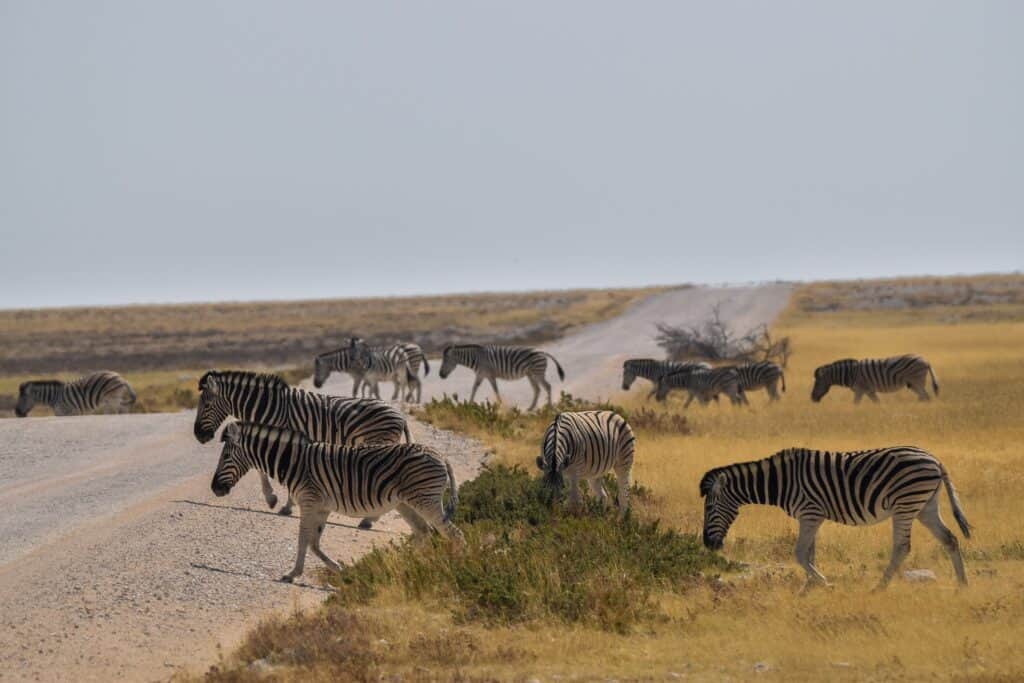

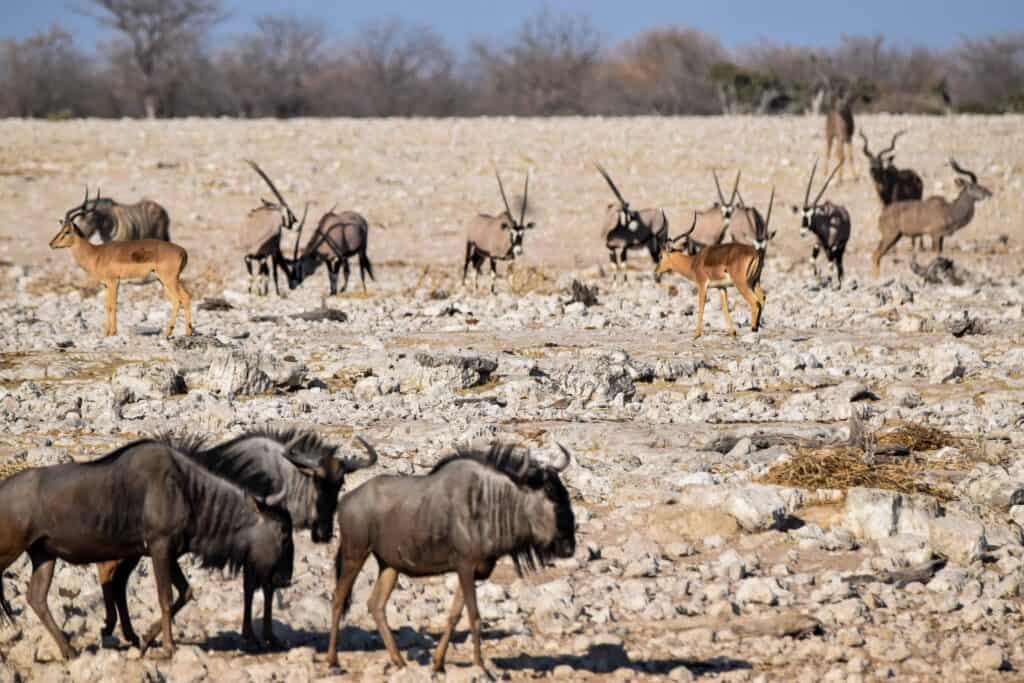
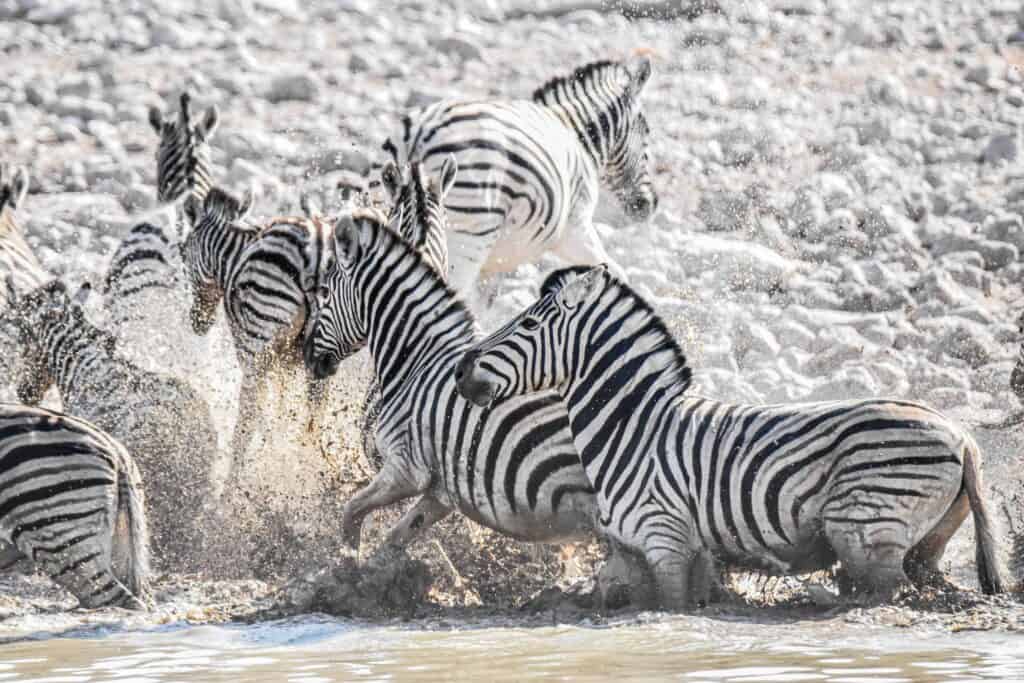
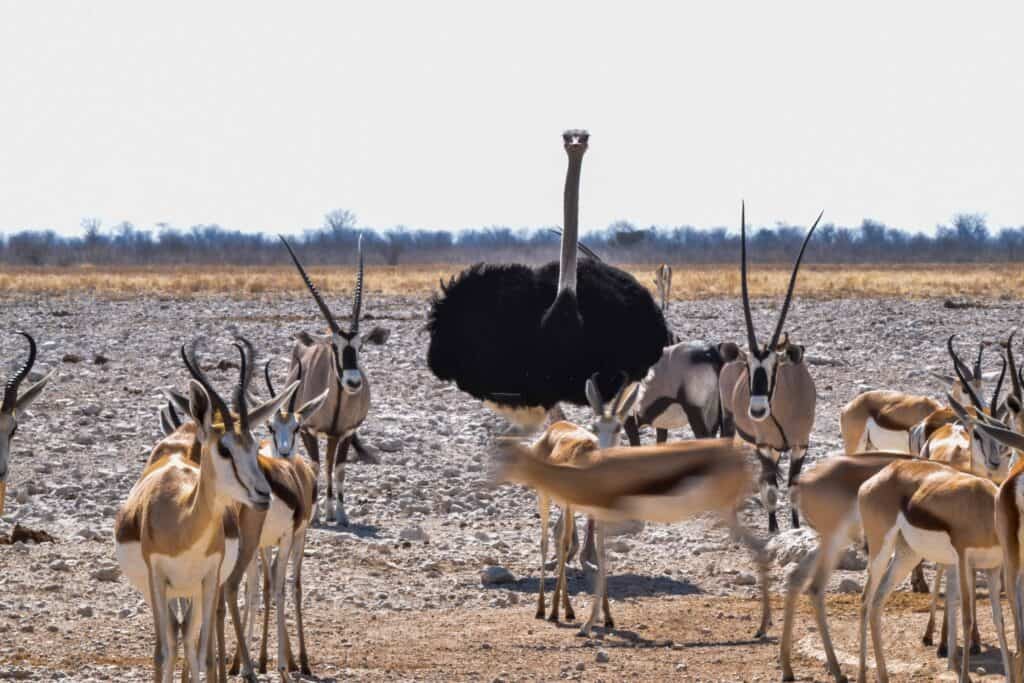

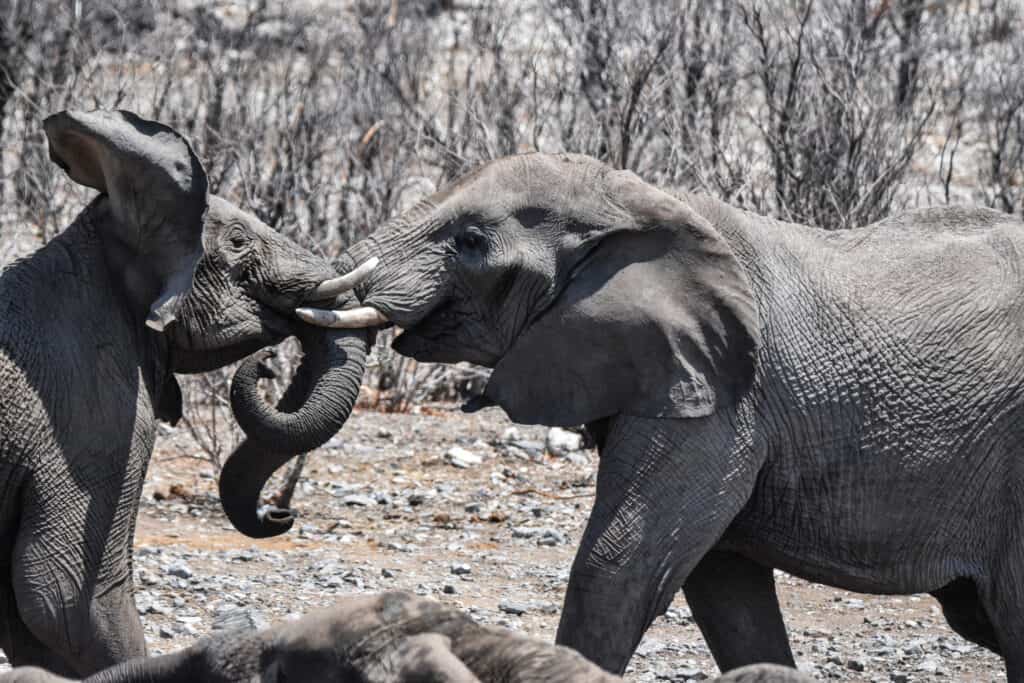



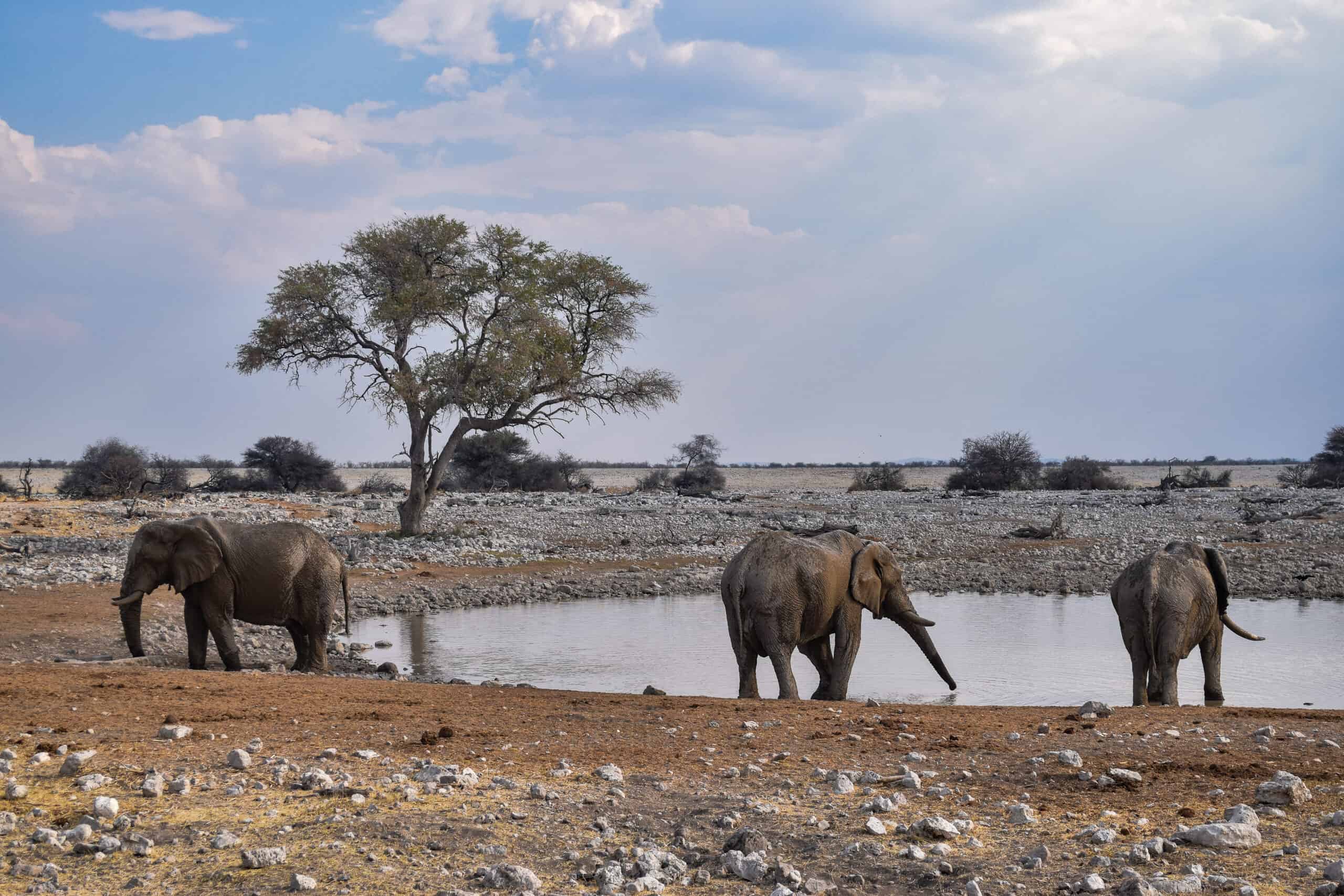
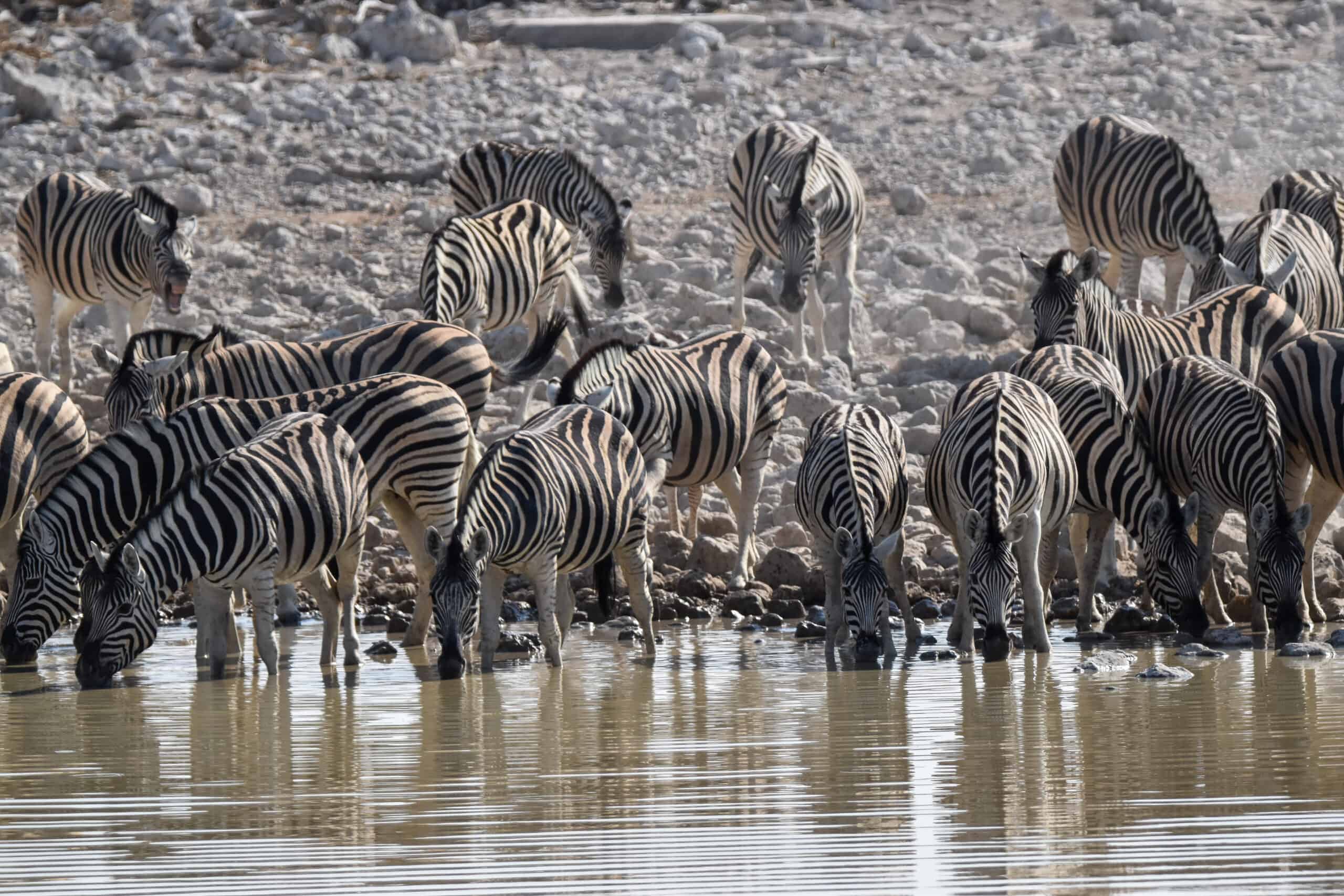
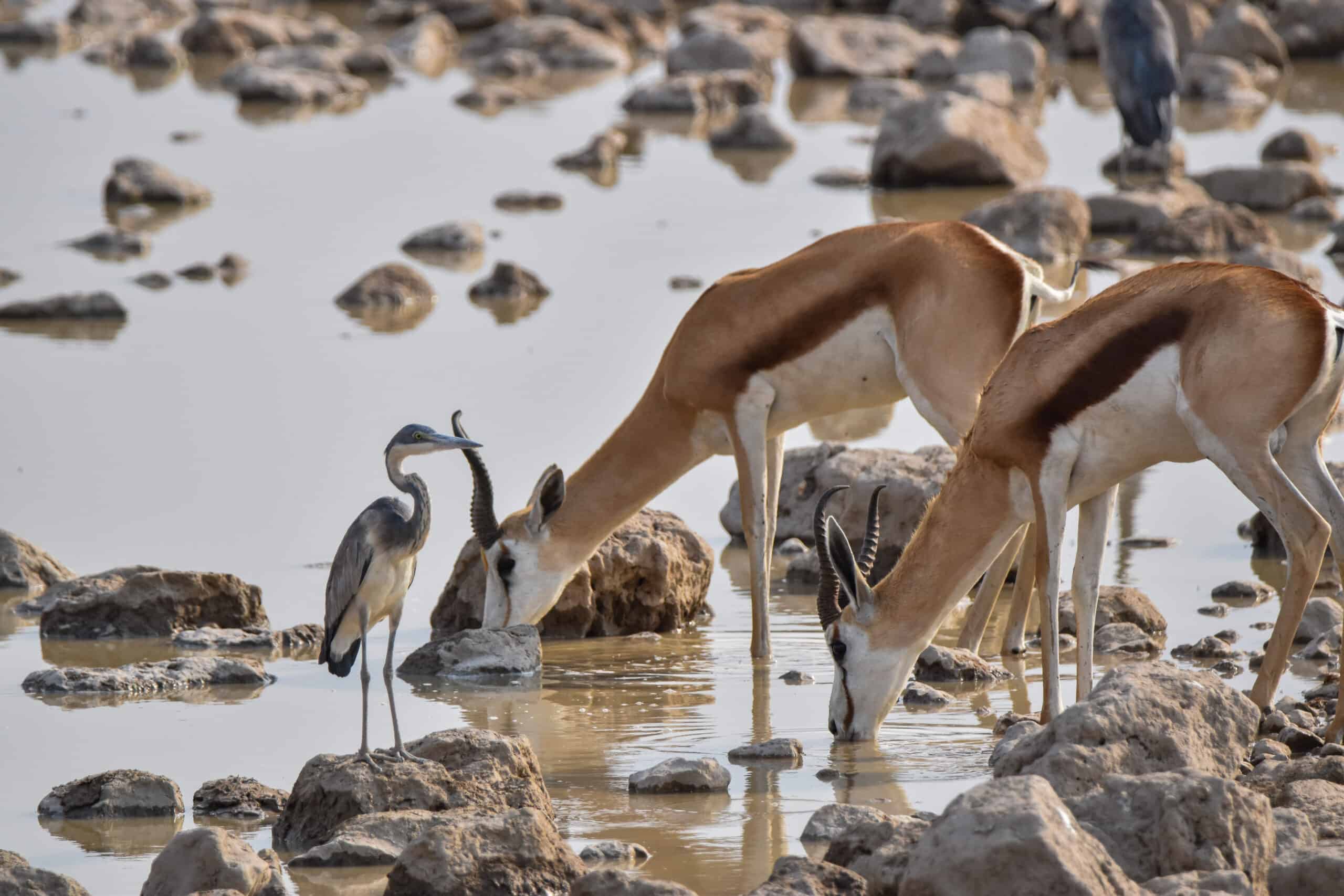
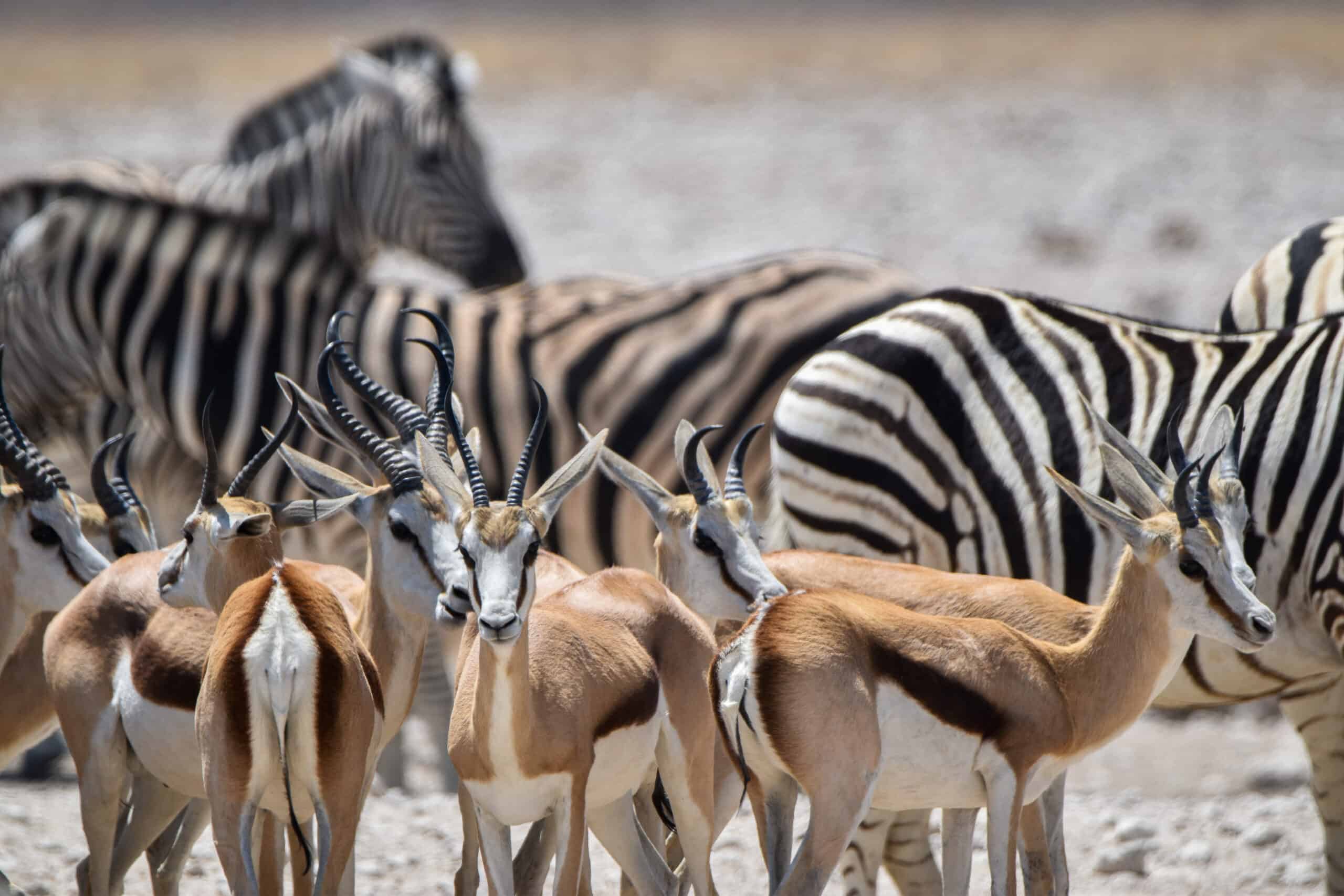
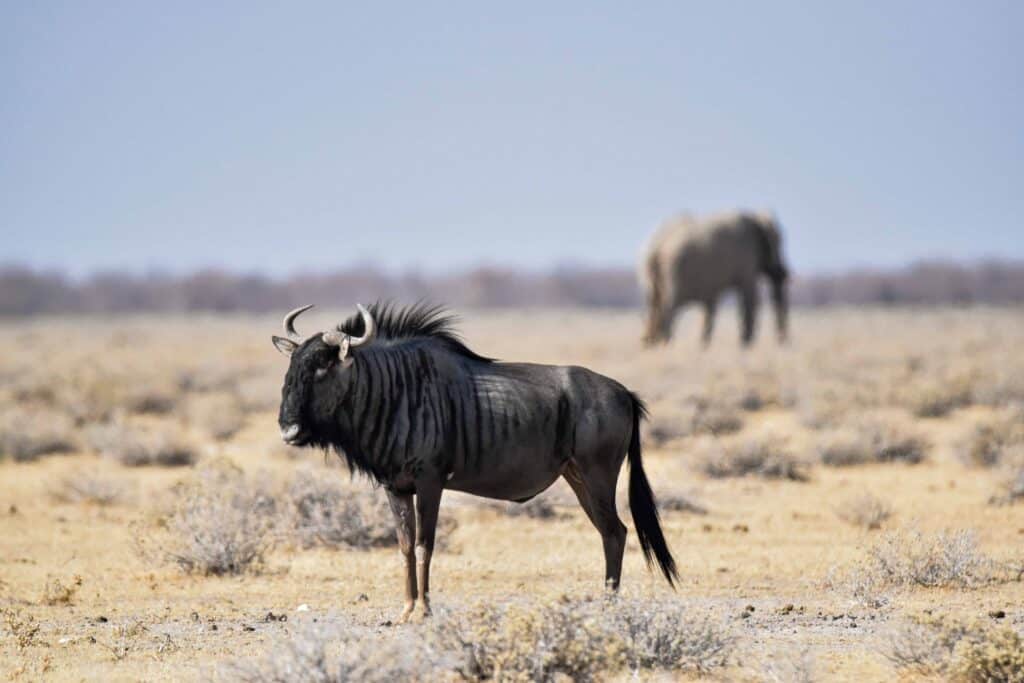
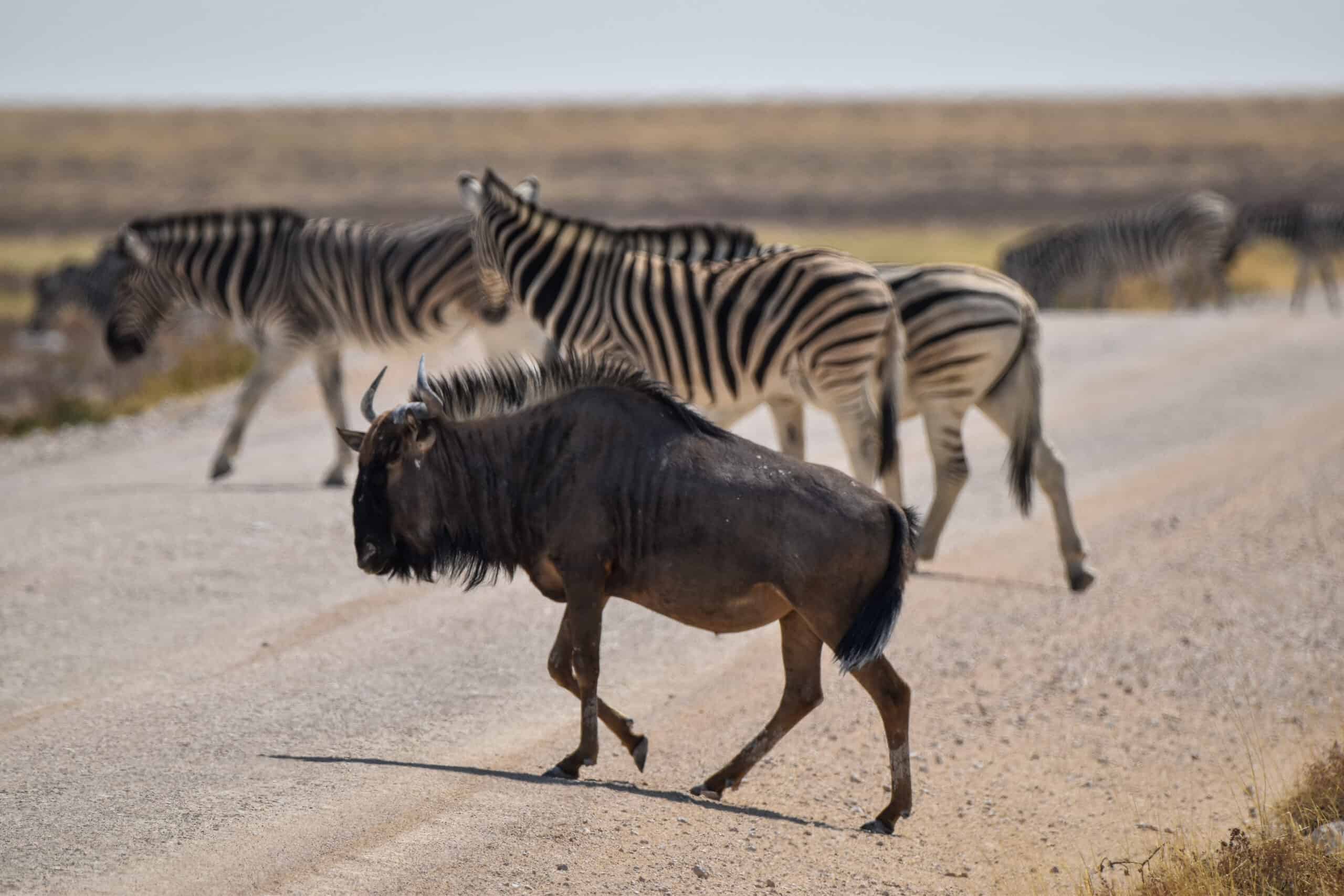
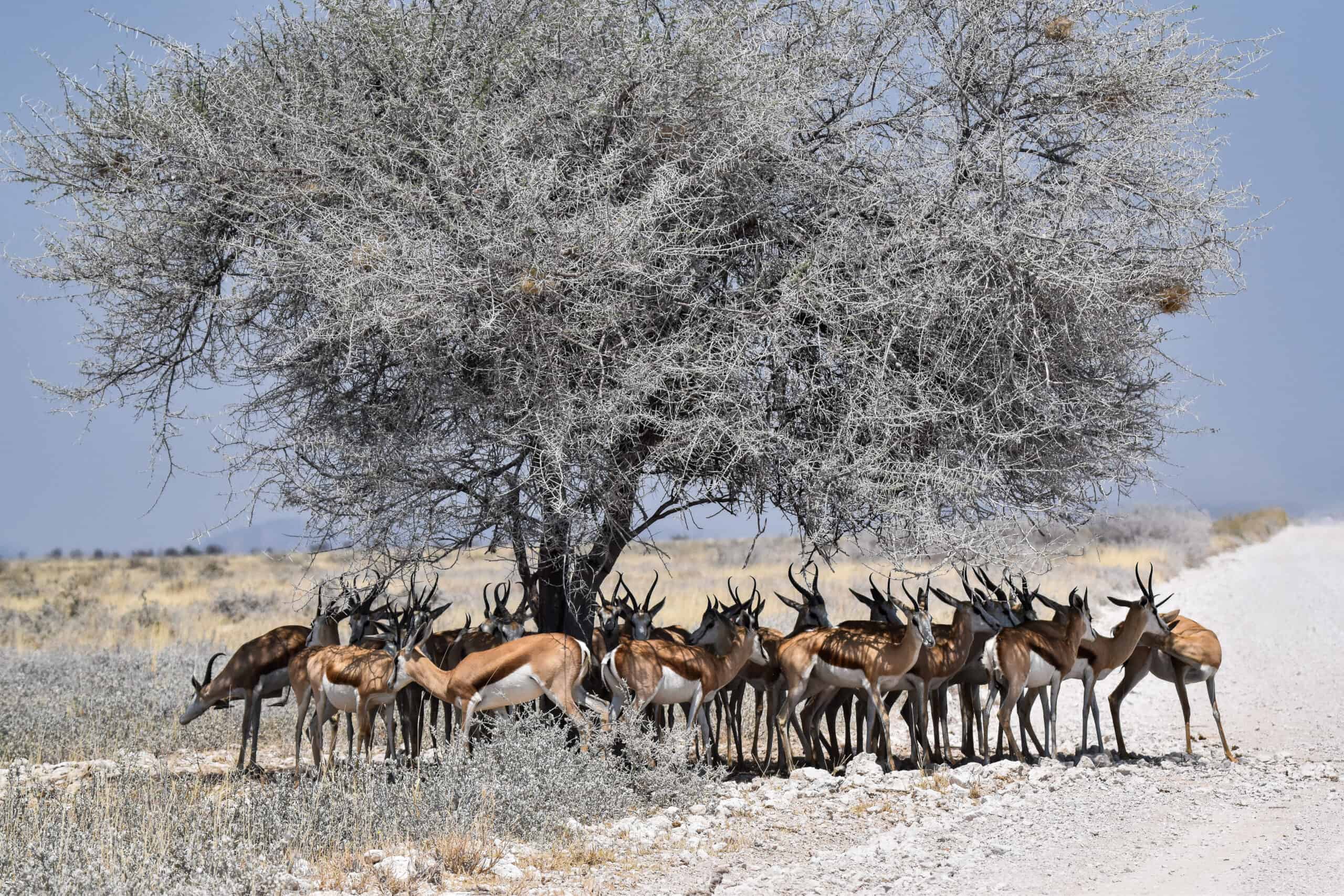
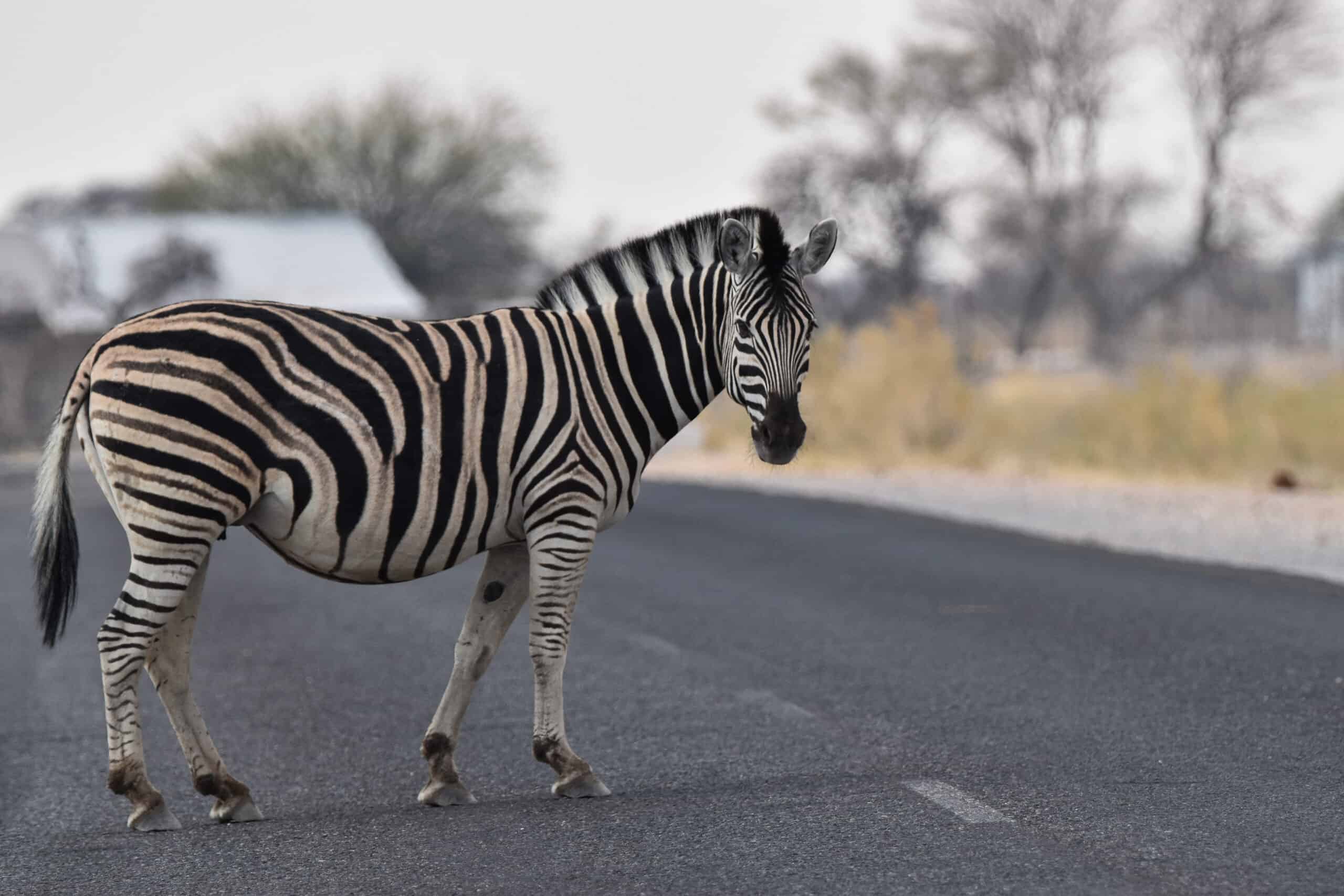
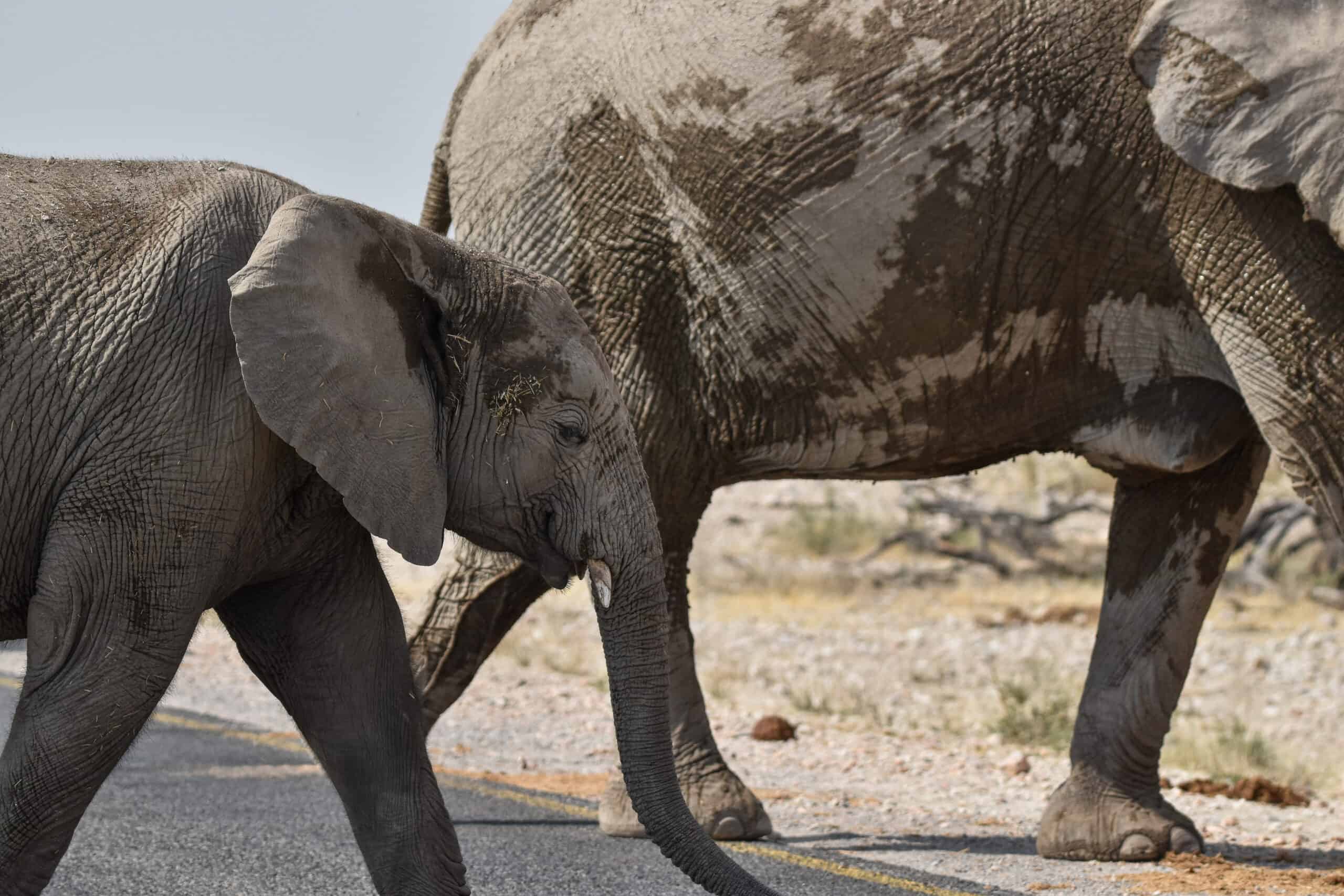

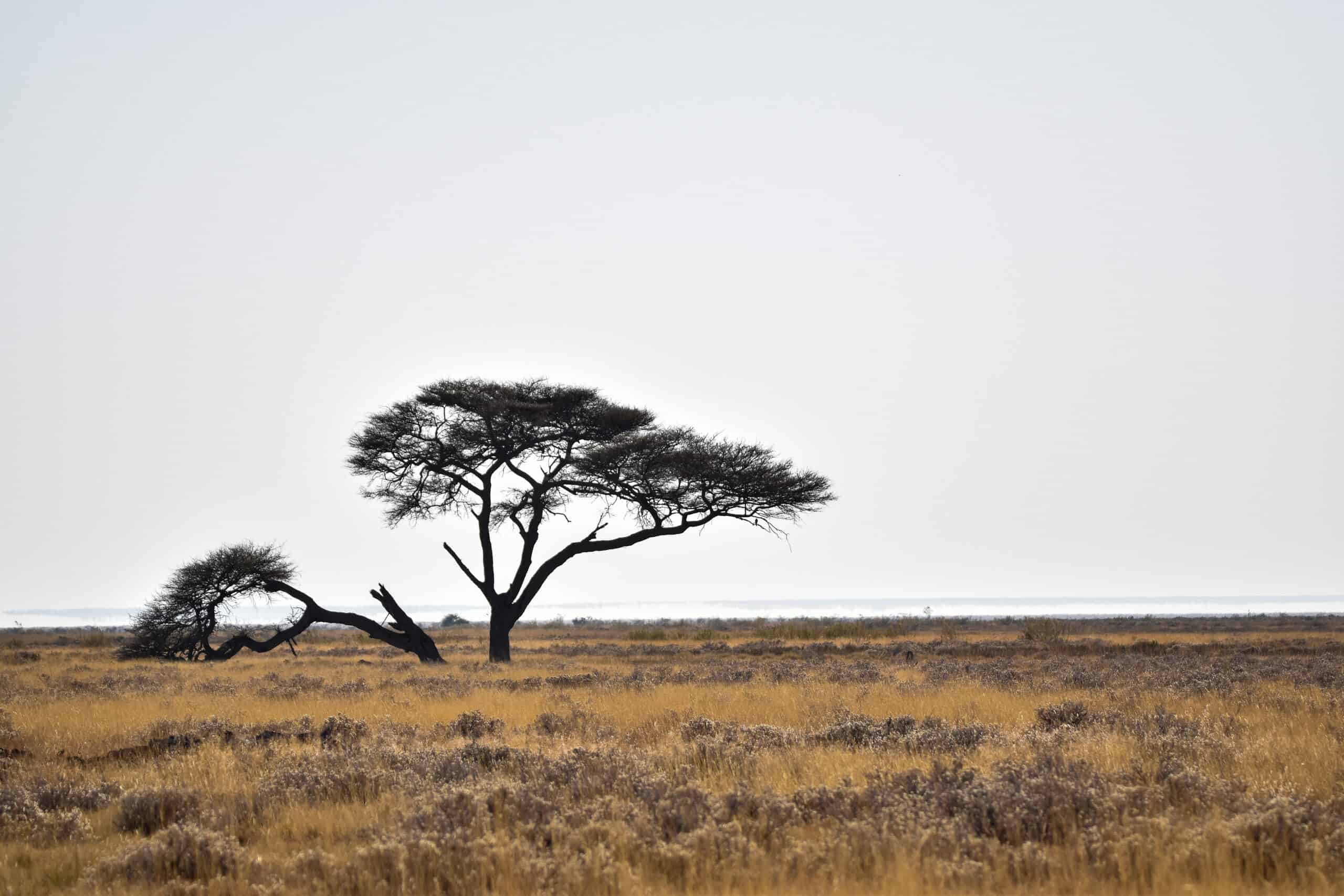
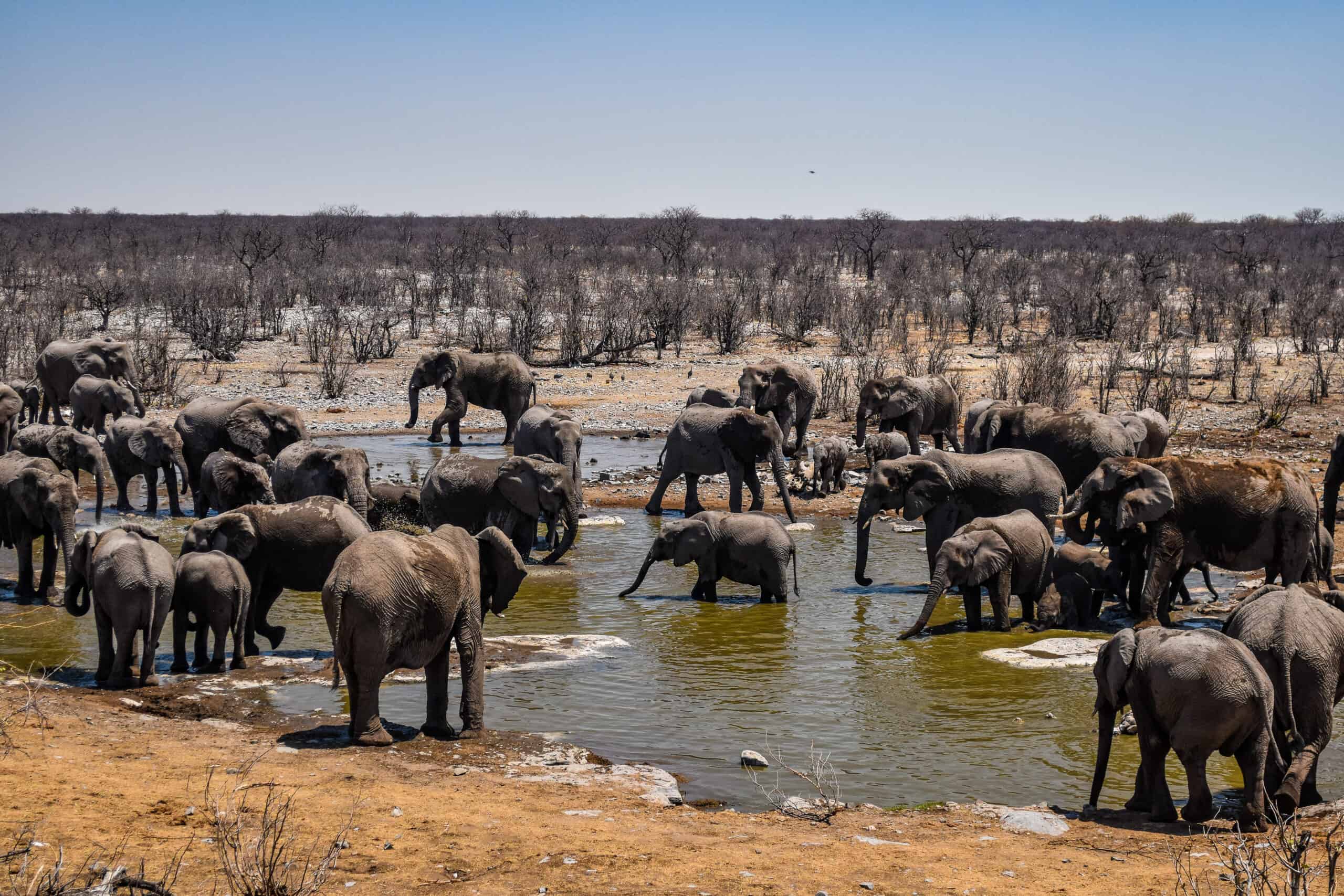
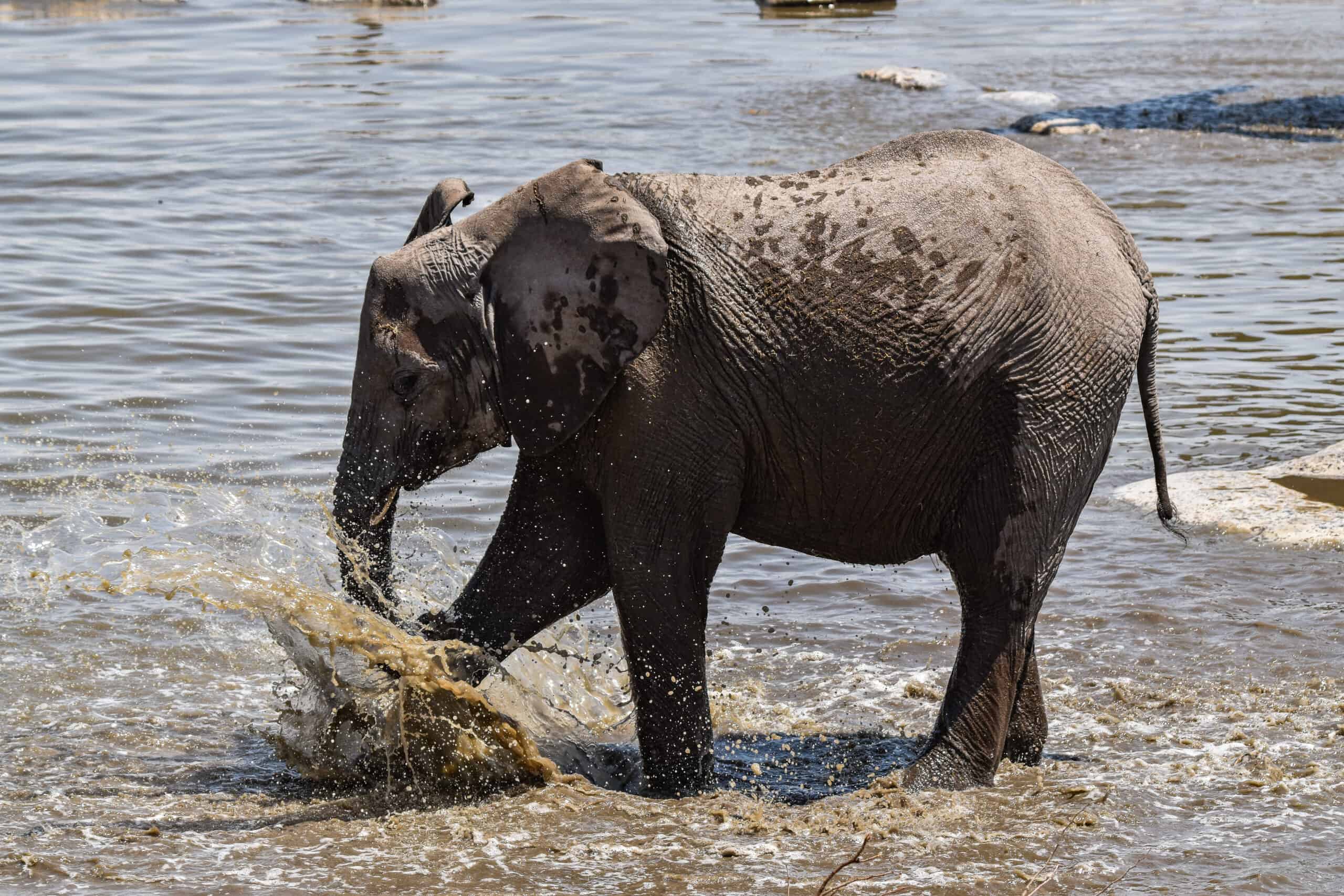
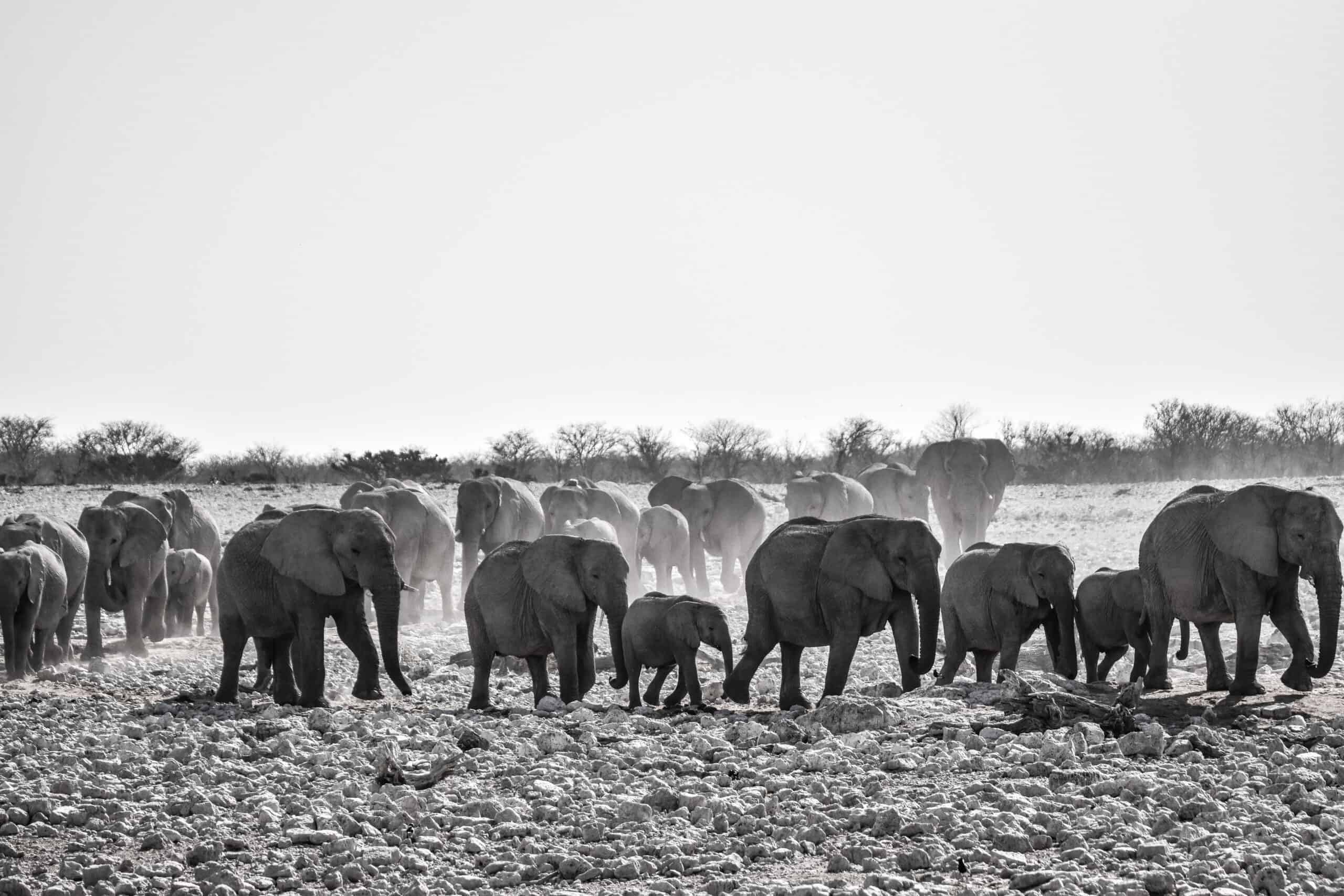
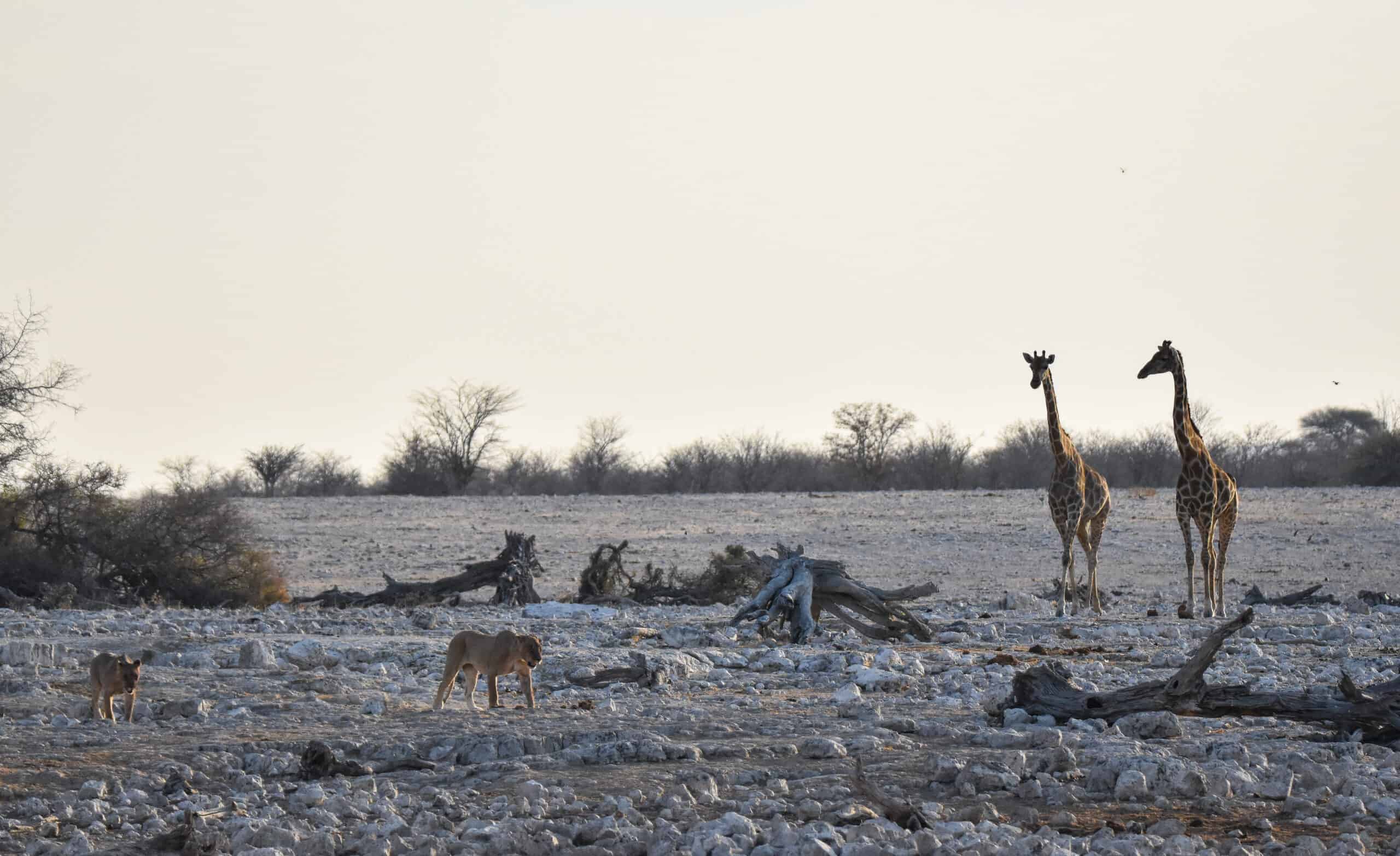
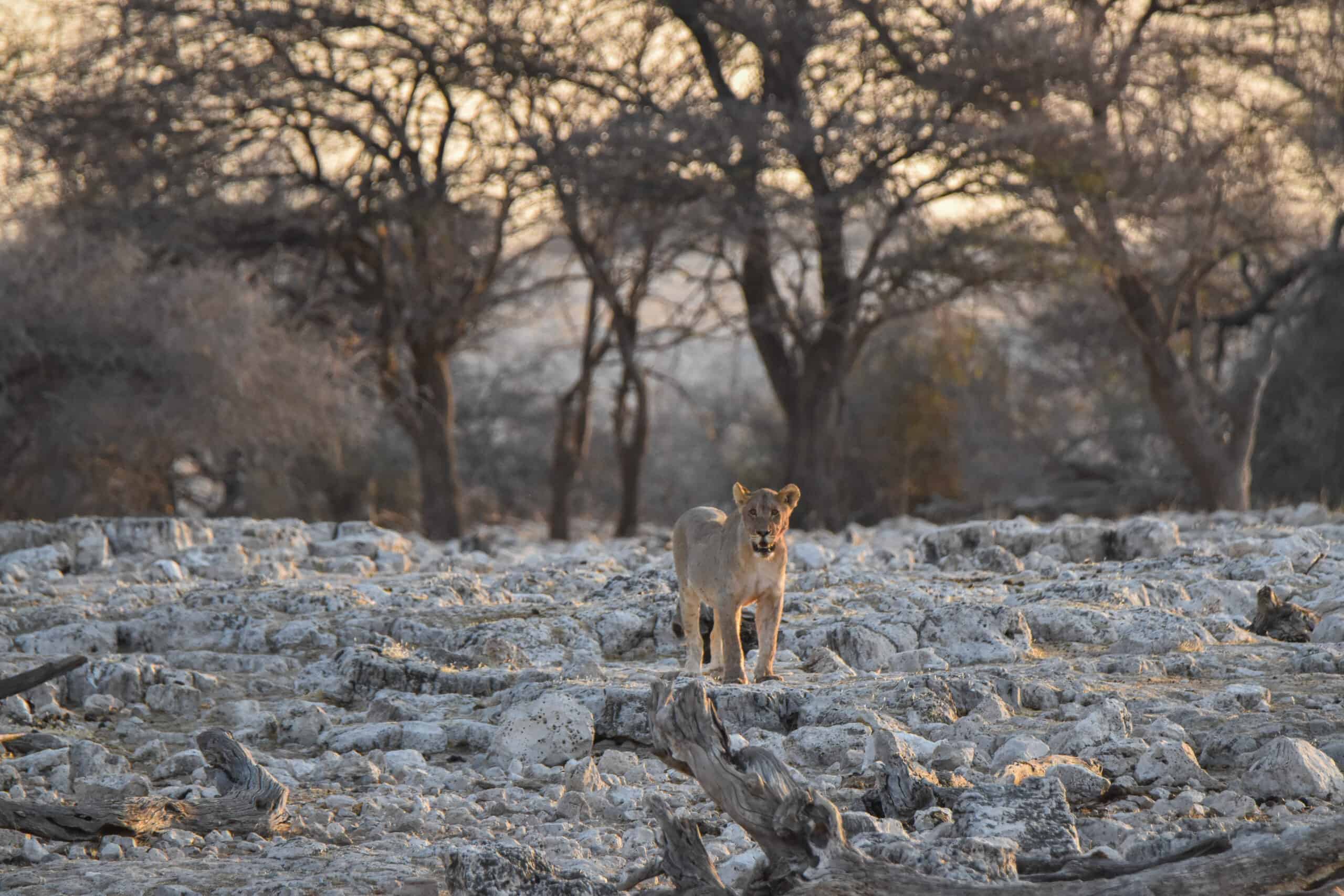
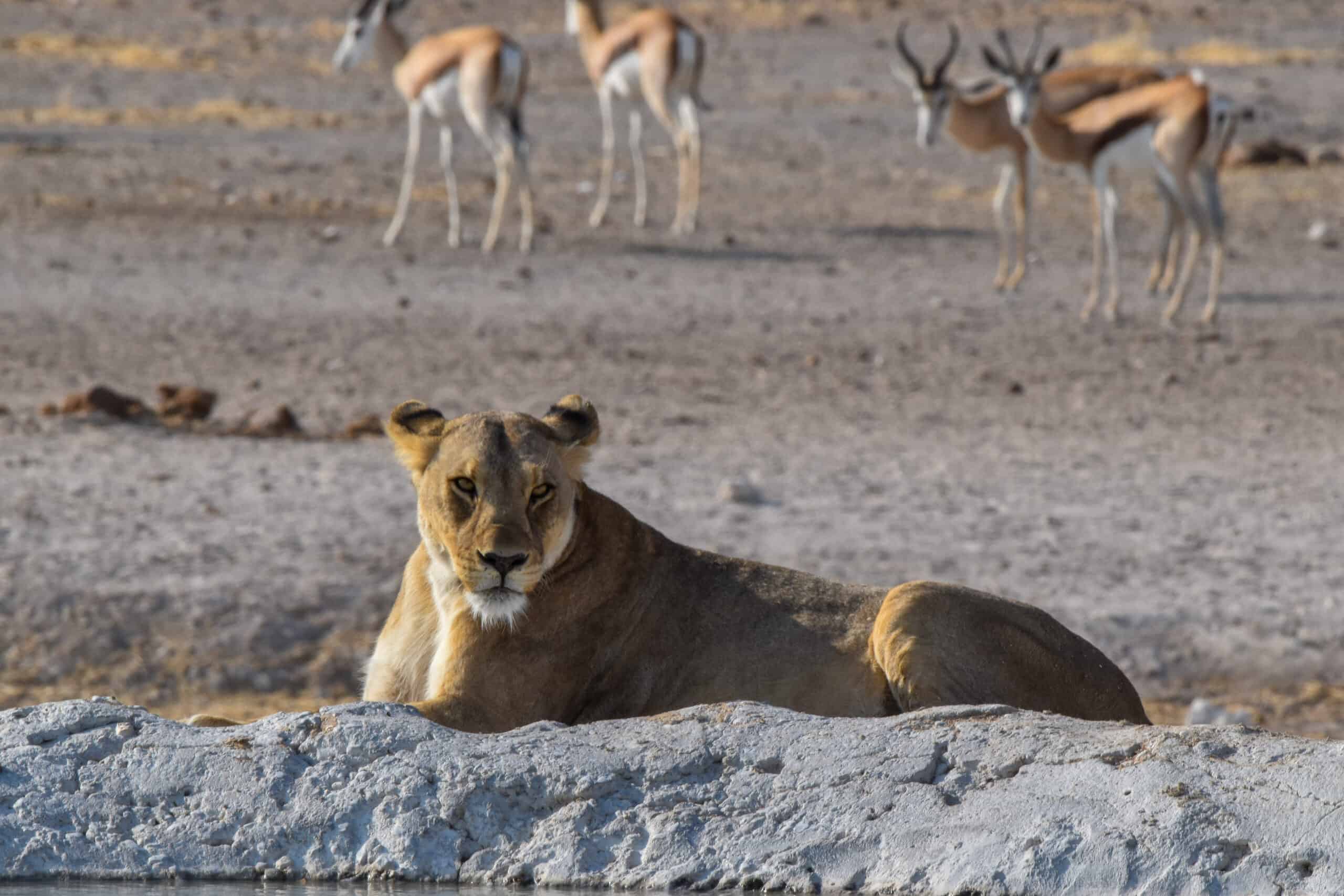
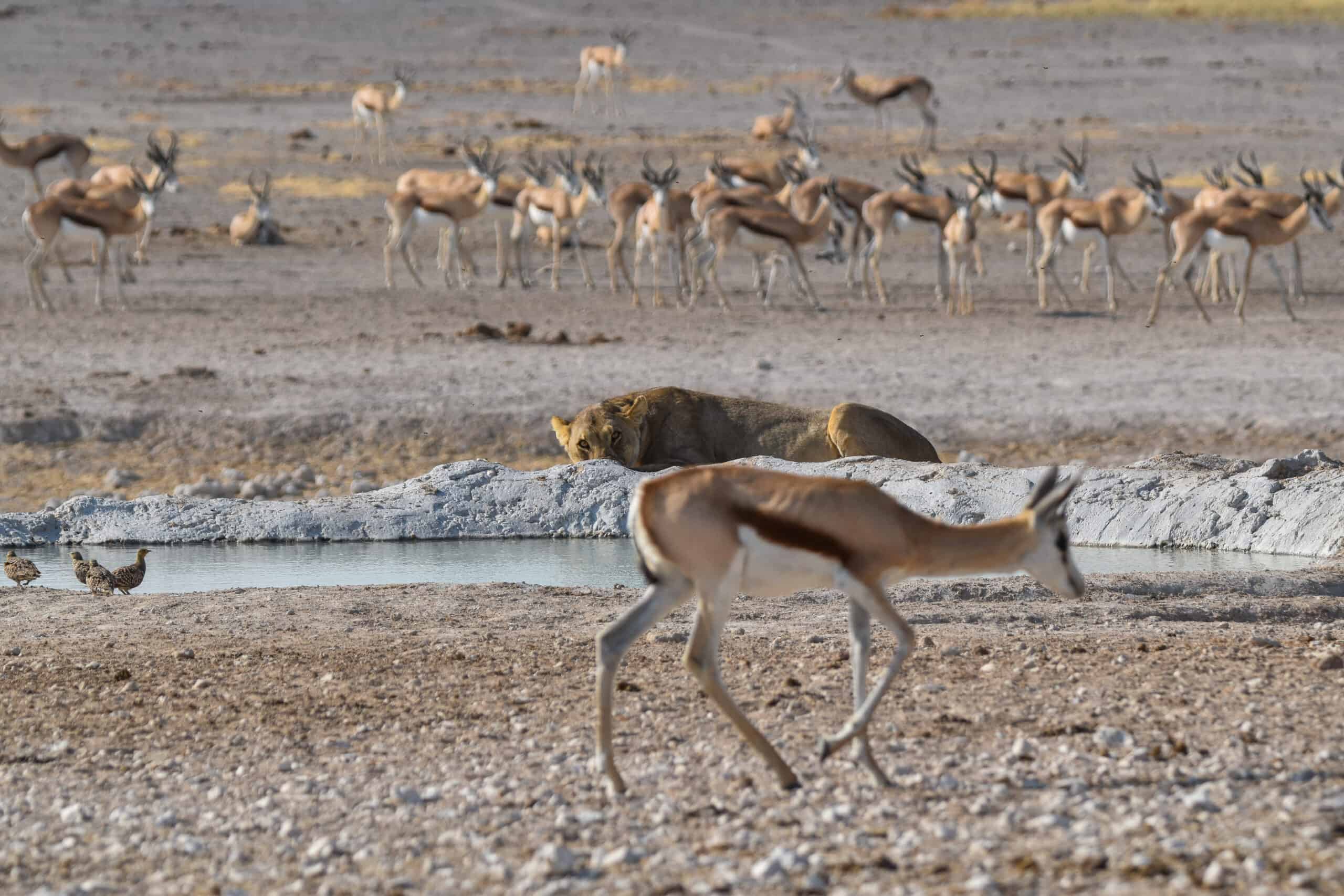
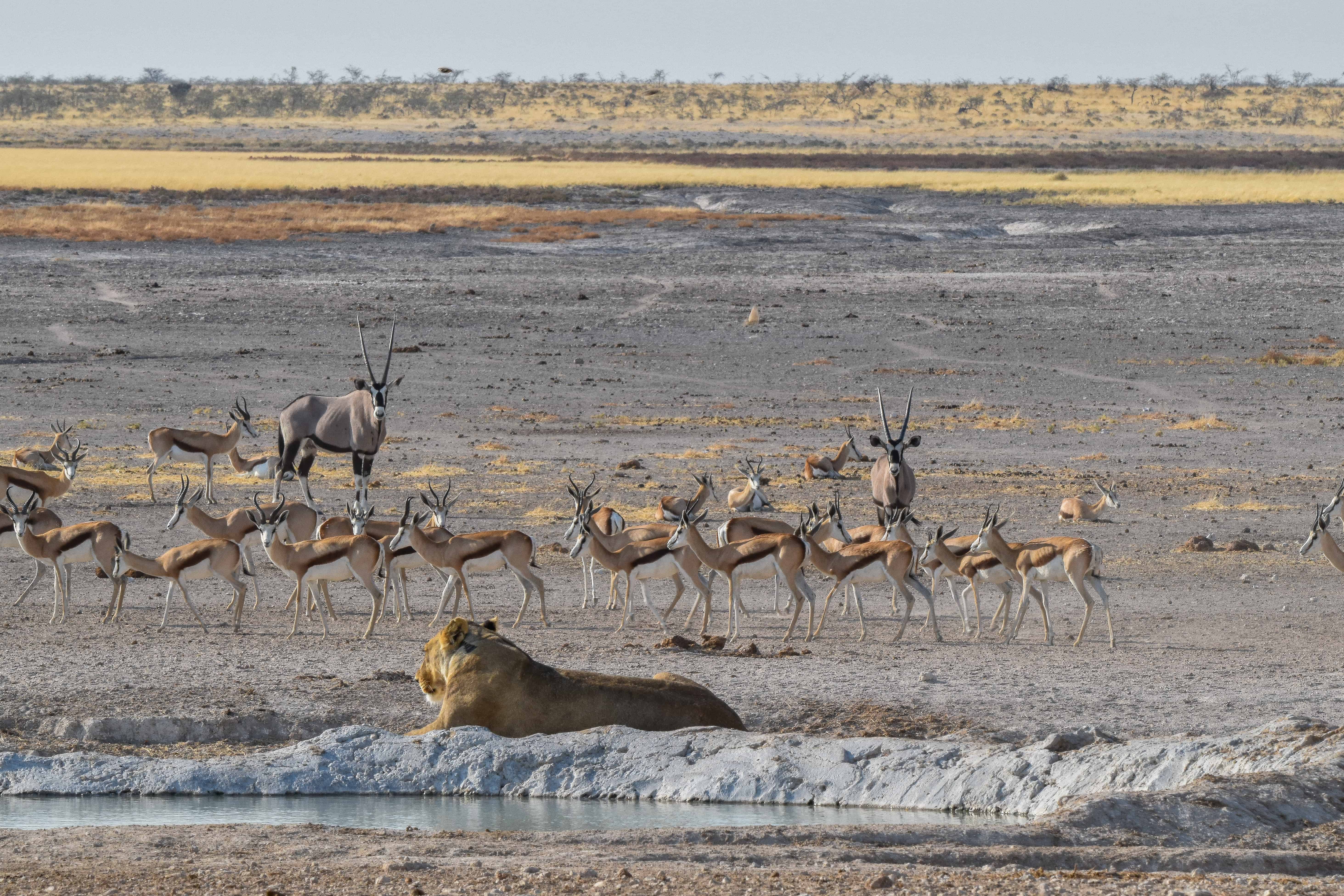
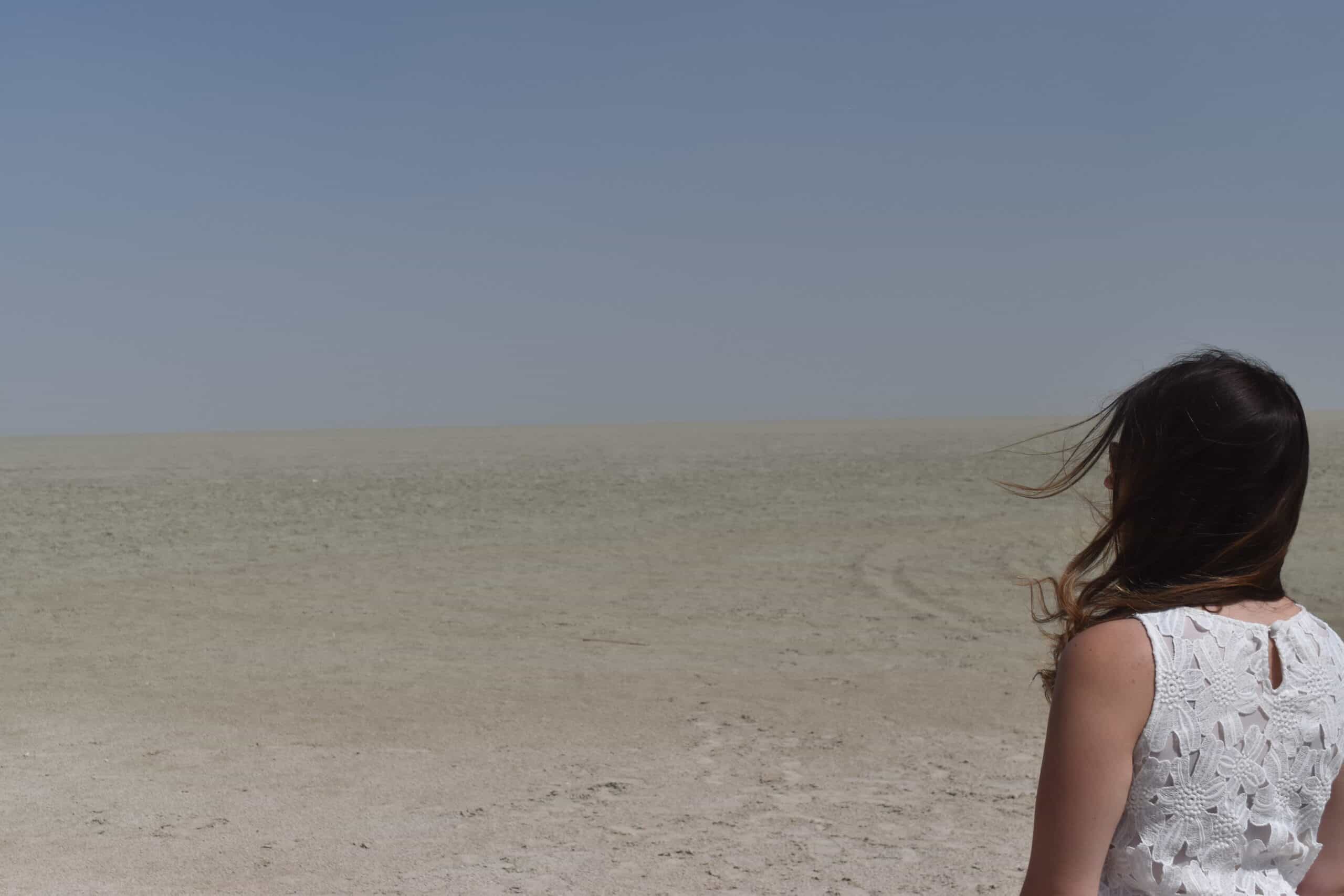
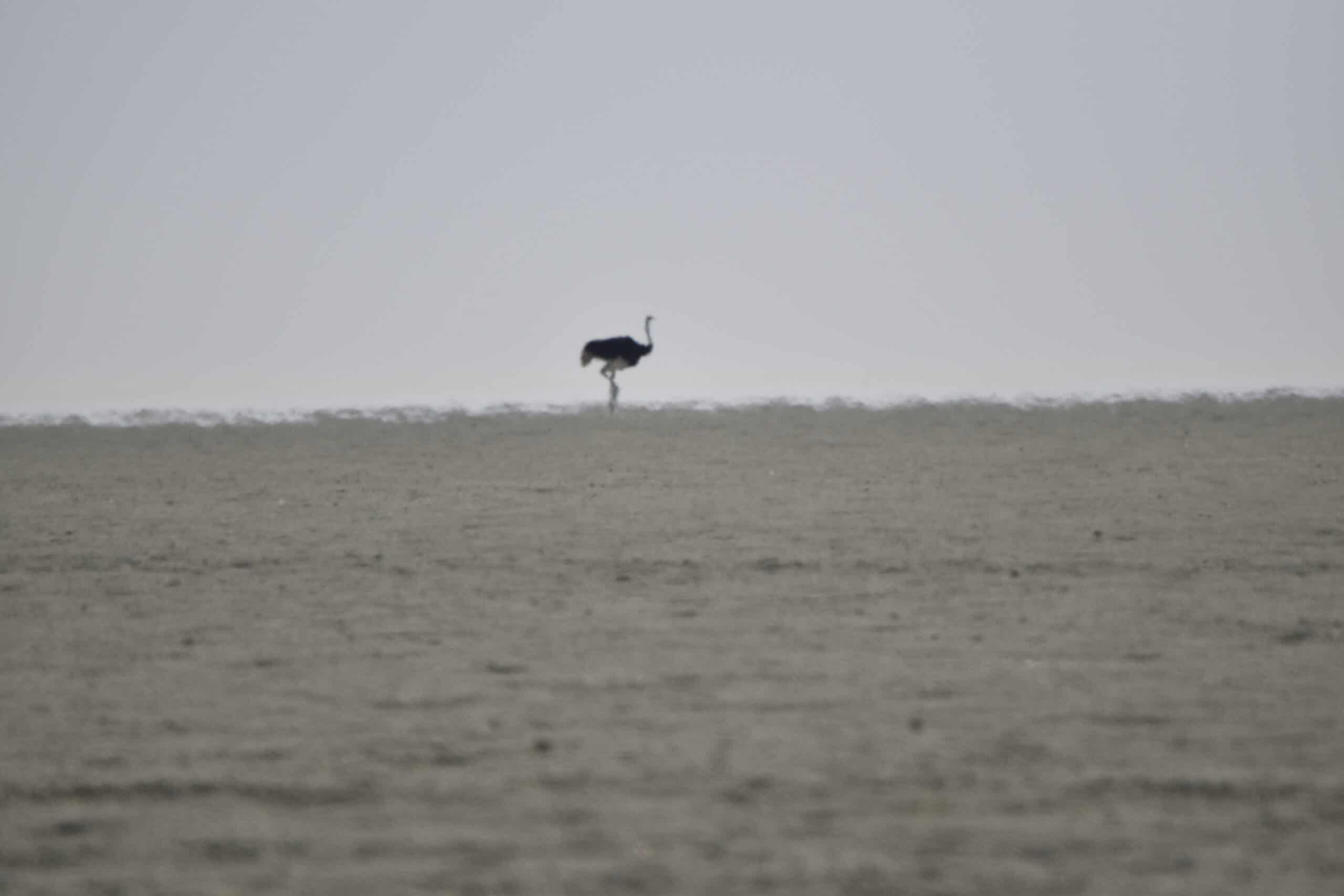

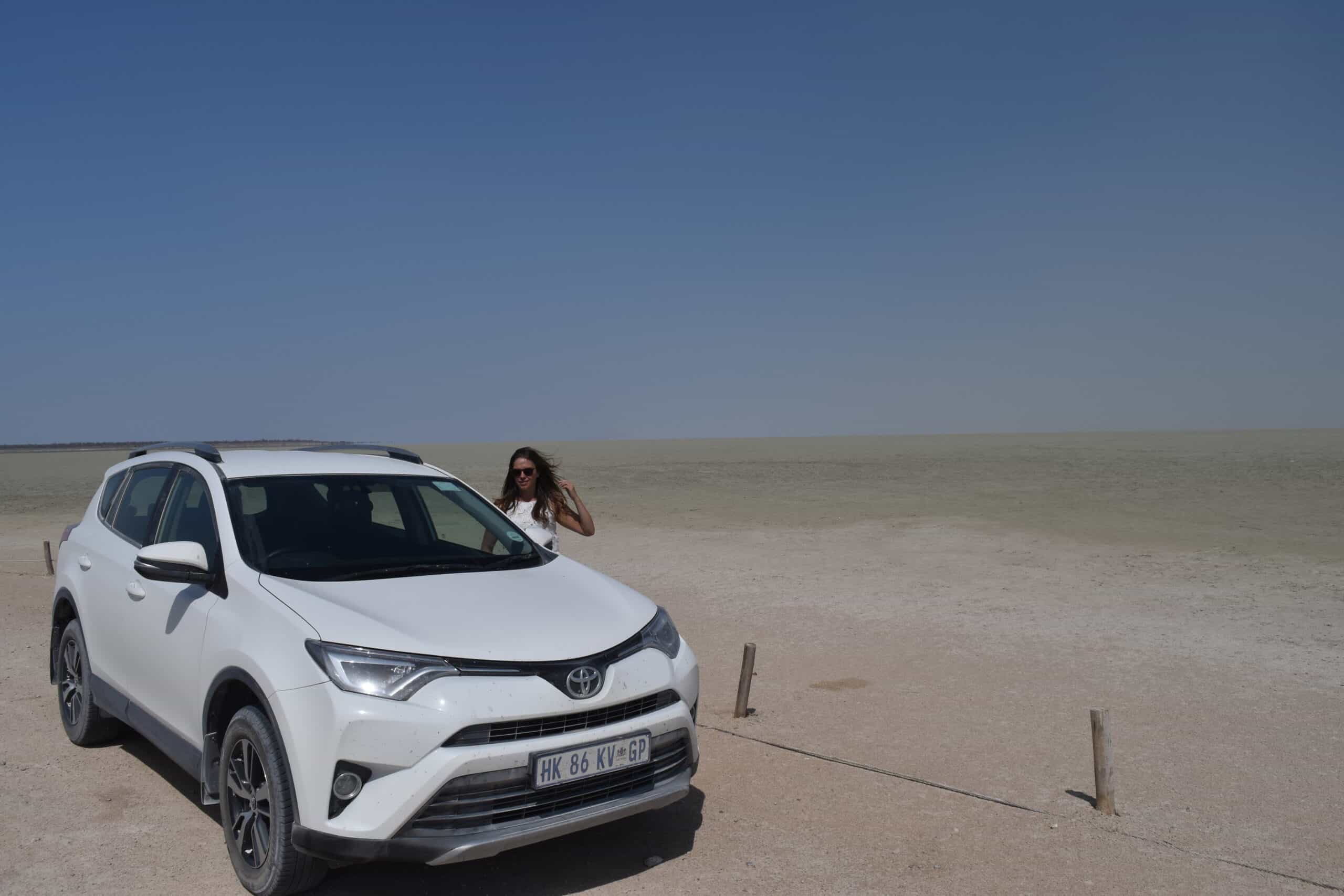
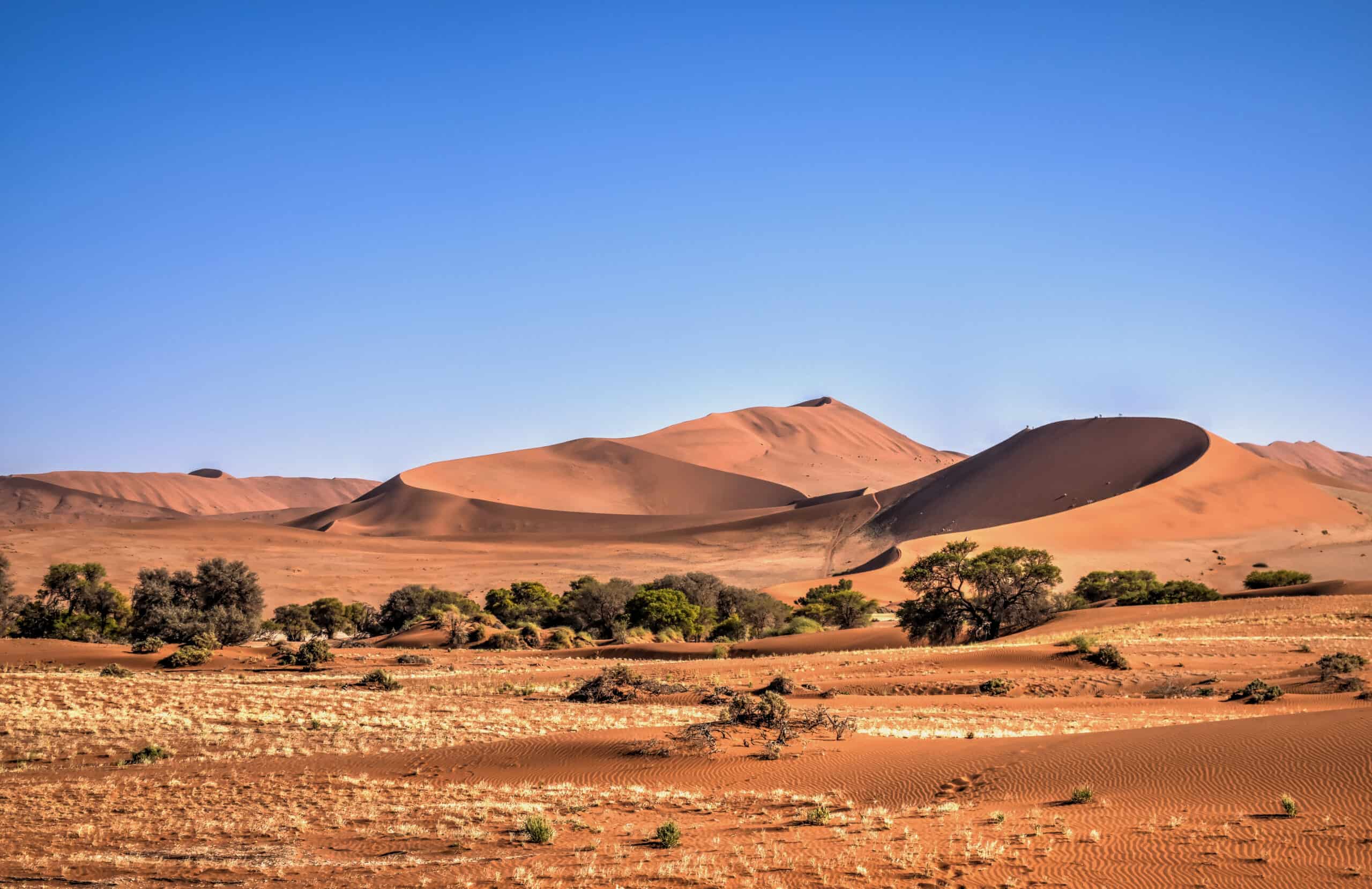
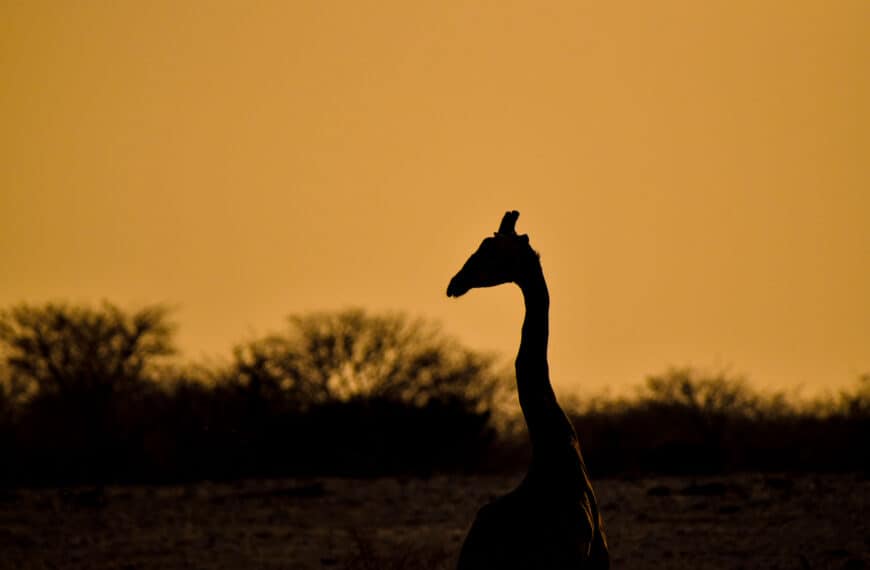
1 Comment